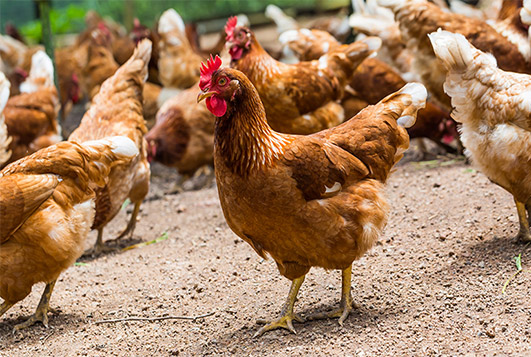When using layer chicken cages to raise chickens, humidity is also an important condition for brooding, but chicken farmers generally do not pay enough attention. The humidity in the brooding house is generally expressed in relative humidity. The higher the relative humidity, the more humid the air; the lower the relative humidity, the drier the air.
After the chicks come out of the shell, they enter the brooder house. If the humidity of the air is too low, the moisture in the chicks will be exhaled through breathing, which is not conducive to the absorption of the remaining yolk in the chicks and the growth of the chicks' feathers. Once the chicks have been given a drink, the chicks often develop diarrhea due to too much water.
Appropriate humidity requirement: 60%-65% before 10 days of age, and then reduced to 55%-60%. In the early stage of brooding, due to the dry litter, the house is often hot and low humidity, which is easy to increase the water loss of the chicks, loss of appetite, frequent drinking, dry and brittle fluff, and dry toes.

In addition, too dry can easily lead to dust, causing respiratory and digestive diseases. Therefore, this stage must pay attention to the replenishment of water in the house. You can spray water on the aisle or wall of the house to increase humidity, or place a basin or kettle on the stove to burn water to generate steam to increase the humidity in the house.
After 10 days of age, the chicks developed quickly, gained weight, and their feed intake, water intake, breathing volume, and excretion volume increased with each passing day, and the temperature in the house gradually decreased. Especially in the midsummer and rainy seasons, it is easy to have excessive humidity. The chicks are not well adapted to the humid environment. The low temperature and high humidity in the brooding house will exacerbate the adverse effects on the chicks at low temperatures. The chicks will feel colder and even tremble with cold, at this time susceptible to various respiratory diseases. When the high temperature and high humidity in the brooding house, the water evaporation and heat dissipation of the chicks are hindered, and they feel more sultry and uncomfortable, and the chicks are prone to coccidiosis and aspergillosis.
Therefore, during the period when laying hens cages are used to raise chickens, it is necessary to change the litter frequently and strengthen ventilation. When adding drinking water, prevent water from spilling onto the ground or litter.
